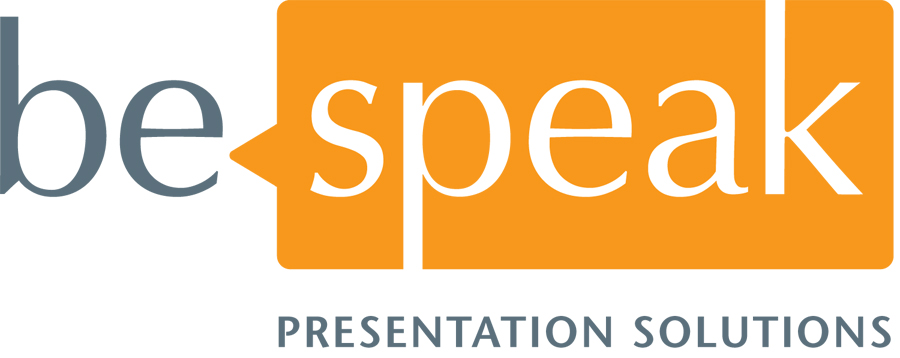1.) Copy and paste stuff from other people's slide decks
I know, I know, you're a very busy person. You don't have time to reinvent the wheel (or in this case, the visuals for your presentation). It's easier and faster just to go into your colleague's presentations and copy and paste stuff. And that's exactly why it's so detrimental. It requires hardly any effort, or any thought. It's kind of like shopping in a grocery store (even a really good grocery store) without any idea of what you want to cook. You come away with some interesting ingredients, but no way to make it a meal.
A good presentation, like a good meal, requires thought, and a lot of it. If someone has a slide that shows exactly what you want to say, copy and paste away. But please don't put your brain on auto-pilot and go shopping in other people's slide decks.
2.) Click through your slides a few times and decide you're good to go.
Clicking through your slides may help you become familiar with them, their order, etc., but it is not the same as PRACTICING OUT LOUD.You must PRACTICE OUT LOUD in order to work through the inevitable kinks. You want to be sure you can talk through transition points, talk to what the audience is looking at, determine if in fact they should be looking at that particular thing at all. There is no way to know how the presentation will go, what it will sound like, how long it will take, if you've got things in the right order, if there's too much of one thing and not enough of another until you PRACTICE OUT LOUD. Oh, and once you get everything the way you want it you'll want to PRACTICE OUT LOUD a few more times for familiarities sake.
3.) Put EVERYTHING you're going to want them to 'know' on the slide.
If you've put together a PowerPoint deck that says everything you're going to say in the presentation, do your audience a favor. Email the deck to them and let them read it in the comfort of their own offices or homes. Don't drag them out and into a boardroom or ballroom to watch and listen as you tell them what they can read on the screen. Remember, we read and listen with the same side of our brains. We cannot do both at the same time. Plus, putting something on a slide - particularly text, does nothing to insure that our audience will 'know' it. Want them to remember a key point in your presentation? Tie it to a story. People remember stories, and they'll remember the point that went with it.
4.) Apologize to the audience right at the start, and repeatedly throughout.
Unless you're two hours late or the air conditioning or heat isn't functioning in the room there's no reason to be apologizing. Audiences don't care if you're nervous, they won't like to hear you "just whipped this together last night", nor will they realize your slides are out of order - unless you tell them. Audiences are there for themselves. Apologizing for your nerves or your slides only draws attention to things they wouldn't have noticed or cared about otherwise. Don't do it.
5.) Wing it.
Every once in a while I run into someone who brags to me that when giving a presentation they "wing it". Like this is something to be proud of. Any time you gather people together to hear what you have to say it behooves you to know what is going to come out of your mouth. If you are a nervous speaker, hate public speaking, or think you stink at it, try PRACTICING OUT LOUD. I guarantee you will have a happier, more confident, all around better result. Be kind to your audience and to yourself. Quit winging it.
See yourself in any (or all) of these five? If you do, turn things around. you'll be on your way to creating and delivering great, successful presentations. In short, you'll be heard.
Friday, August 16, 2013
Monday, August 5, 2013
Trombone or presentation; we must practice practice practice
When my friend and loyal newsletter reader, Isaiah Cooper, read my August issue he wrote me with the following insight. With his permission I share this with you. What's good for the trumpet player is equally good for the presenter!
"When
I read the part(s) about practicing out loud it reminded me of things I learned
about practicing the trombone when I was a professional trombonist.
When
I was preparing for a concert or for an audition I would record my practicing
(in those days a decent “Walkman” would provide a reasonable recording). I would then listen to it three times:
(1)
once to get out (and get rid of) my super self-critical chatter (which is
meaningless, really),
(2)
once to focus on what was wrong in the recording, and
(3)
once to focus on what was right in the recording.
I
learned that if I had a clear mental (or aural) image of how I wanted to sound
and if I just noticed where my performance was not matching up with that mental
image, when I played it next I would correct many things automatically.
A
speaker has to have a clear idea of what they want to communicate and let that
guide their practice.
Given
time constraints, it is easier to use this system with short segments (phrases,
not whole movements) of a musical piece (or of a presentation).
A
speaker or presenter could use this approach to practice their presentation
with respect to each slide or each group of slides."
I could not agree more - even with the listening to the recording three times. We must practice OUT LOUD in order to make what we want to say match up with what actually comes out of our mouths. (or in Isaiah's case, his trombone).
Subscribe to:
Posts (Atom)



